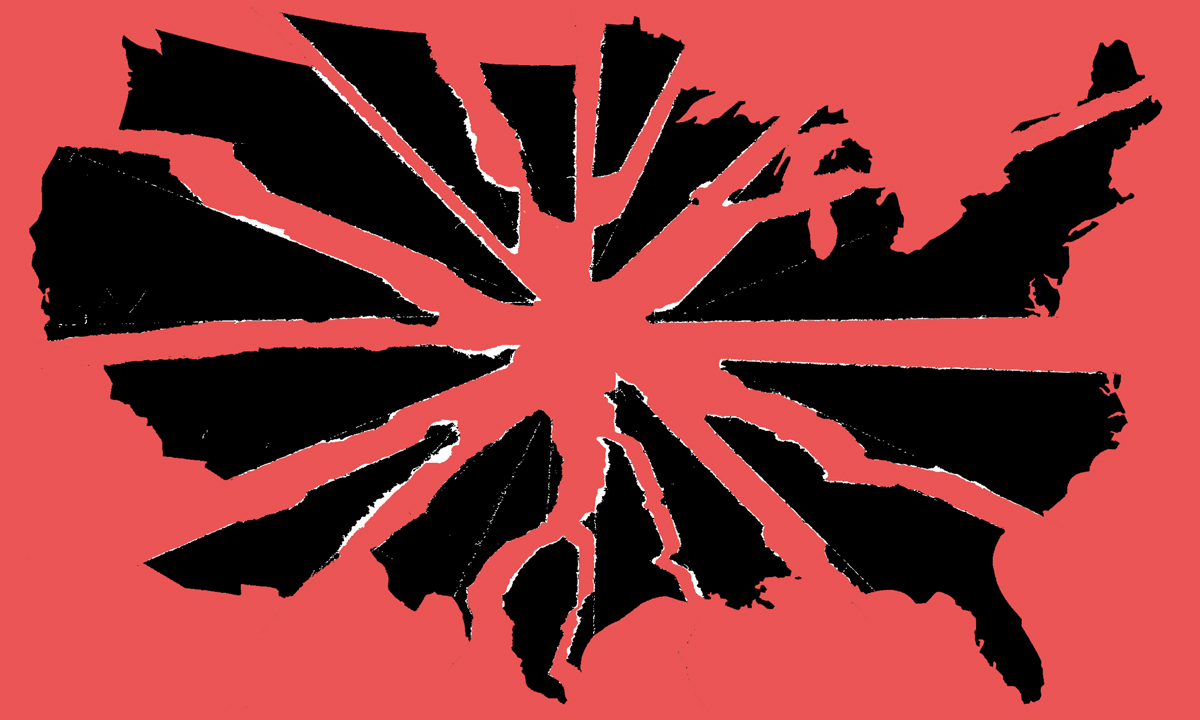How Educational Inequities Are Further Tearing Apart the Country
We’re not all in this together — and America’s public schools teach that lesson early and often to students of color, other marginalized groups

Get stories like these delivered straight to your inbox. Sign up for The 74 Newsletter
“I am here to dump hot coals on all your heads,” said the man at the Brainerd Public Schools board meeting in Brainerd, Minnesota, last summer. “That’s not a mean thing … In the Bible it talks about that. If you are wrong, if you are on the wrong side, it’s gonna hurt. If you’re on the good side, [it] doesn’t hurt a bit.”
His biblical invocation was overheated for the topic: Critical Race Theory, the now-familiar academic concept conservatives have appropriated as a slur to attack lessons they deem too critical of American political institutions. His anger wasn’t unique. Controversies at school board meetings have unspooled into national news for much of the past year. The pandemic has been awful for our social cohesion, deepening divisions that were already well frayed.
And yet, schools are sadly appropriate forums for these flare-ups. The educational divisions we’ve tolerated for so long — segregated schools that facilitate inequitable underfunding of campuses with large shares of children of color, wide variance in school safety and quality, and the like — aren’t just terrible for kids, they’re deadly for American democracy. These systemic biases reveal the substantive rot in what our country professes to offer all members of its community.
On the one hand, schools exemplify the universal promises of American society. Long-time teachers union leader Al Shanker once explained public schools as “created for the purpose of teaching immigrant children reading, writing and arithmetic and what it means to be an American with the hope that they would then go home and teach their parents.” Schools are perhaps the country’s most visible public investment in its citizens — a clear contribution of collective resources to ensure that each of us gathers the knowledge and skills necessary to make a career in the economy, to practice learning and living together with our peers, and to participate in the various systems shaping American life.
But schools are also where the country perjures those promises, where many of the biases of American life are systematically transmitted and enshrined. The country says, “Work hard here, succeed here and you’ll rise up through American society.” But when children of color, when children from low-income families arrive on campuses, academic rigor is too often scarce, harsh and exclusionary discipline is abundant, and real opportunities for advancement are largely missing. And then, years later, their children arrive at these same campuses, only to find much the same conditions.
When researchers write about “historically marginalized” children and communities, these are the cruel mechanics that define the people they mean. These are the means of marginalization. So, is it any wonder that kids from these schools, from these backgrounds, grow into jaded skeptics of American society and its economy? It’s hard to believe in, let alone support, let alone trust, a system that promises meritocracy while delivering gilt-edged opportunities by the truckload to the privileged — and repeatedly consigning children to dysfunctional, under-resourced campuses. The inequities of our school system make a mockery of the gauzy rhetoric of the American Dream.
Worse, the pandemic further sharpened divisions between those for whom the system has historically worked and those whom the system has historically failed to serve. English learners (ELs), who are disproportionately likely to attend socioeconomically segregated, high-poverty schools, were often left out of local pandemic-learning plans and became more likely to be chronically absent from school. Students in high-poverty schools made less academic progress during the pandemic than peers in wealthier schools. Children of color were, on aggregate, not served well during schools’ many months of scrambling through virtual and/or hybrid learning plans.
As my colleague Kevin Mahnken put it in a recent article summarizing new data from the National Assessment of Educational Progress, “At all performance levels across [math and reading], 9-year-olds experienced statistically significant declines in their scores; but even with the identical downward trajectory, struggling students lost so much ground that disparities still expanded.”
Incidentally, what is the core claim underlying critical race theory? It goes something like this: Racism can be detected in public systems, and the design and structure of social policies contribute to social disparities. In other words, it charges that the laws, regulations and institutions shaping public life perpetuate and entrench racial divisions across generations. Seemingly neutral systems are rigged — and they’re rigged in ways that substantially harm particular communities of people.
So whether you like the term “critical race theory” or not, it offers a pretty accurate description of the unjust reality of U.S. public education. The pandemic is a universal experience that imposed roughly equivalent risks and constraints on all U.S. schools. But in our country, public schools and communities are not universally alike, universally supported, or of universally high quality. So the impacts of the pandemic weren’t equally felt; COVID-19 took a public education system that was already unfairly tilted against historically marginalized children — and heightened its inequities.
So now, more than ever, these divides are driving the broader culture wars invading American education debates today. People for whom the system — the broader American socioeconomic system, its markets, schools and beyond — has generally worked are defensive about the notion that it isn’t, in fact, wholly fair and meritocratic. It’s intuitive to them that the system must be defended from books and curricula that suggest otherwise. Things worked out fine for them, after all!
And yet, the past two years have provided tragic, predictable proof that American public education remains systemically unfair for families of color, low-income families, English learners, and other historically marginalized groups. Members of these groups have ample evidence that they should not, at base, trust that U.S. schools — or society — will routinely prioritize their best interests.
So here we sit, from Brainerd to Florida, from Maryland to Orange County, arguing over whether or not it should be legal to discuss this fact. We have mostly white, mostly privileged people anxiously demanding that schools not talk about the ways that the country’s public institutions have unfairly served marginalized communities through history — instead of directly addressing the consequences of the unfair treatment marginalized communities received during the pandemic. We’re not only debating how U.S. schools teach the sins of the American past. We’re deciding whether we, as communities, are ready to address the facts of America’s unequal present.
For years, Americans have struggled to pull together in common cause — to solve political problems, to face public health crises, to respond to injustices in our collective community. Our separate, divided society derives in part from our separated, segregated schools. The pandemic made clear that educational inequities linked to these divisions are why we’re not — whatever the particular collective challenge — all in any of this together. How could we be? Americans learn from the start that we are not actually in community with those other citizens.
There’s no short-term fix. But the long-term solution to our incohesion isn’t about requiring kids to chant the Pledge of Allegiance or read fables extolling George Washington’s virtues and excising his slaveholding from the public record. It’s about rebuilding our schools in a way that treats all children with the care and respect they deserve, in a way that enrolls all children into schools that resemble the diverse society they’ll someday inhabit as adults.
Get stories like these delivered straight to your inbox. Sign up for The 74 Newsletter


